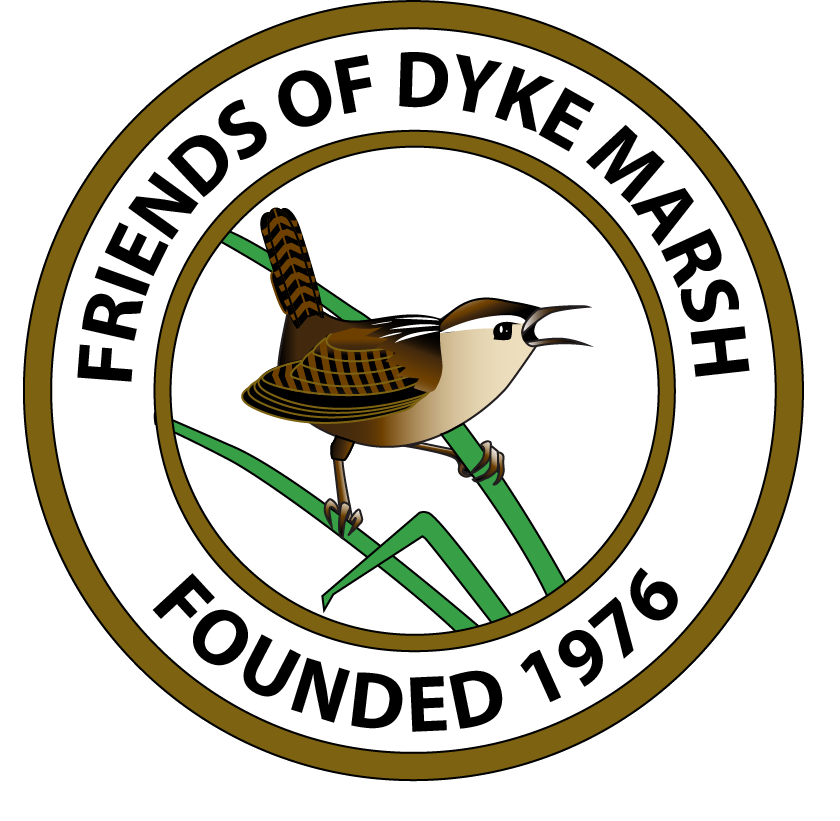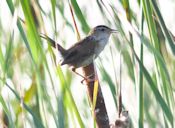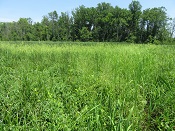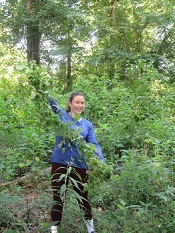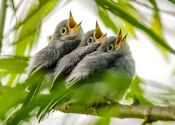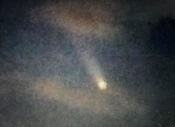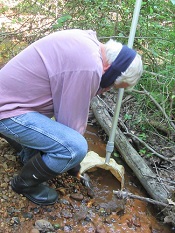In early August 2020, FODMers observed two or three male marsh wrens (Cistothorus palustris) in Dyke Marsh in what FODMers call “the Big Gut.” It appeared that none of the birds had a mate and since it was so late in the breeding season, the observers believe that it will be unlikely for these birds to attract a mate this year so late in the season.
These volunteers heard the unmistakable bubbly call of the marsh wren and saw several dummy nests but no complete nest. This male likely represents the remnant population of what was once a thriving marsh wren colony and is a reminder of the fragility of the habitat and the loss of significant marsh acreage in the preserve. See “Restoration.”
